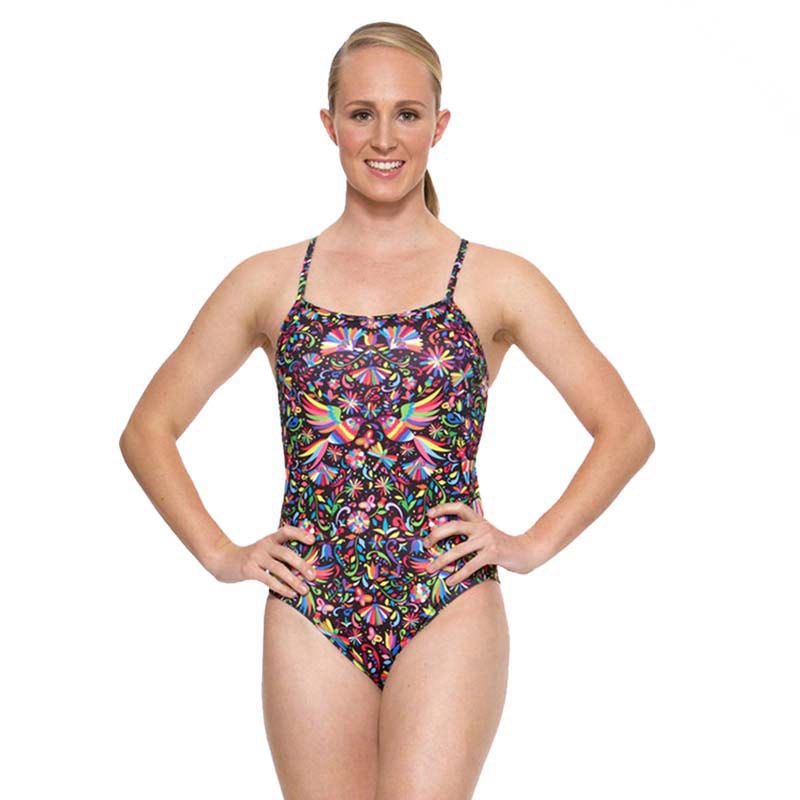Have you ever stepped into a swimsuit and immediately felt that something was off? I know I have. Finding the perfect swimsuit fit can feel like a quest, but trust me, the reward of feeling confident and comfortable is worth every effort. Let’s dive into how you can find a fit that makes you feel fabulous, no matter the poolside or beach scenario.
Find Your Perfect Swimsuit Fit
Your swimsuit should feel like a second skin, giving you freedom of movement while staying in place. Here’s how to find that elusive perfect fit.
How to Find a Swimsuit that Fits My Body

Q. How Should a Swimsuit Fit?
A swimsuit should hug your body snugly without causing any discomfort. According to industry statistics, about 60% of swimwear returns are due to poor fit. Ensure it’s a smooth embrace¡ªno sagging or squeezing. The keyword “how should a swimsuit fit” emphasizes comfort and support for various body types.
Q. How Do I Know My Size?
Knowing your size involves measuring your bust, waist, and hips accurately. Use a measuring tape to get these numbers. Swimwear experts suggest that 80% of women wear the wrong size. Always refer to the brand’s sizing chart for the best match, as variations exist between brands.
Q. Should I Size Up or Down for Swimsuits?
If you’re between sizes, it’s often safer to size down as swim fabrics like Lycra and Spandex can stretch over time. Approximately 70% of swimmers report that their suits fit better after a few wears.
Q. Do Swimsuits Loosen Up Over Time?
Yes, swimsuits can loosen up with wear and exposure to water. A snug initial fit is ideal to compensate for this natural loosening, ensuring long-term comfort and support.
Q. How Do I Fit My Bust Properly in a Swimsuit?
Look for suits with adjustable straps, underwire, or molded cups for additional support. For high-impact activities, consider high necklines or racerback styles. About 50% of women prefer swimsuits with built-in bust support.
Q. What Swimwear Do I Choose if I Have a Small Top and Large Bottom?
Mix-and-match bikinis are your best friend. Choose solid colors or smaller prints for your top and darker shades or ruched designs for your bottom to balance out your proportions. This approach is favored by 65% of women with varying top and bottom sizes.
Q. I Am Tall. Should I Size Up in Swimwear?
Tall individuals might benefit from sizing up or looking for brands offering ‘long torso’ options. This ensures the suit doesn’t pull uncomfortably, a common issue for 45% of taller women.
How Do I Know If My Swimsuit Fits Properly?
Smooth, With No Wrinkles
I always check for a smooth fit¡ªthe fabric should lay flat against my skin without any wrinkles or bunching. Wrinkles suggest the swimsuit is too big.
A Slight Feeling of Compression
The perfect swimsuit offers a gentle compression, just like a cozy hug. It ensures the suit stays in place and offers support.
Breast Support
For bust support, it’s crucial that the swimsuit cuppage provides adequate hold. I look for underwire or built-in bras for a secure fit.
Straps That Stay in Place (Whether It’s a Bikini or a One Piece Swimsuit)
Nothing¡¯s worse than adjusting straps constantly. They should be snug over my shoulders or around my neck, giving me the freedom to move.
Fabric That Stays Put (Especially Around the Butt)
Keeping the fabric in place, particularly around the bottom, is crucial. It should cover perfectly, not riding up or slipping down.
You See Red Marks on the Skin Around Seams and Straps
Red marks indicate the swimsuit is too tight. A well-fitting suit should leave your skin mark-free and comfortable.
Your Swimwear Impedes Movement
If my movements feel restricted, the swimsuit isn’t the right fit. Swimwear should offer both comfort and flexibility.
The Swimsuit Is Difficult to Put On or Get Off
Struggling to get in or out of a swimsuit means it¡¯s too tight. Ease of wear is a sign of a well-fitting suit.
How Do I Measure for the Best Swimsuit Fit?
Measuring yourself correctly is the first step in finding that dream swimsuit. Here’s a quick guide:
Step 1: Measure Your Band
Use a soft measuring tape to wrap around the underbust area. Ensure it’s snug but not too tight.
Step 2: Measure Your Cup
Measure around the fullest part of your bust. For the best accuracy, do this while wearing a non-padded bra.
Your Results!
Compare your measurements with the brand¡¯s size chart. Locate your measurements to find the perfect fit.
Swimsuit Features That Will Give You That Great Fit
Straps: Consider Adjustable Straps or Wider Straps
Adjustable or wider straps provide additional support and customization, ensuring they stay in place and offer comfort throughout your activities.
Molded Cups and Hidden Support Will Give You a Better Fit
These features offer enhanced support and shape, ideal for those seeking extra bust support and a flattering silhouette.
If You¡¯re Between Sizes: Size Down
Swim fabrics loosen up over time, so opting for the smaller size ensures a long-lasting snug fit.
If Your Top & Bottom Are Different Sizes: Try a Two-Piece (Or Bikini)
A mix-and-match approach allows for customized fitting¡ªperfect for those with differing top and bottom sizes.
Tips for Choosing a Swimsuit
What Style of Swimsuit Is Best for My Needs and Activity?
Consider your primary activity¡ªwhether it’s lounging by the pool, swimming laps, or playing beach volleyball. Each scenario demands different styles, from supportive one-pieces to sporty bikinis with secure straps.
FAQ
Is it better to size up or down in swimsuits?
Size down if you’re between sizes; swim fabrics will stretch.
How should a swimsuit fit on the bottom?
It should cover fully without riding up or creating discomfort.
How do I know if my swimsuit top is too big?
Gapping or slipping in the bust area signals it’s too big.


